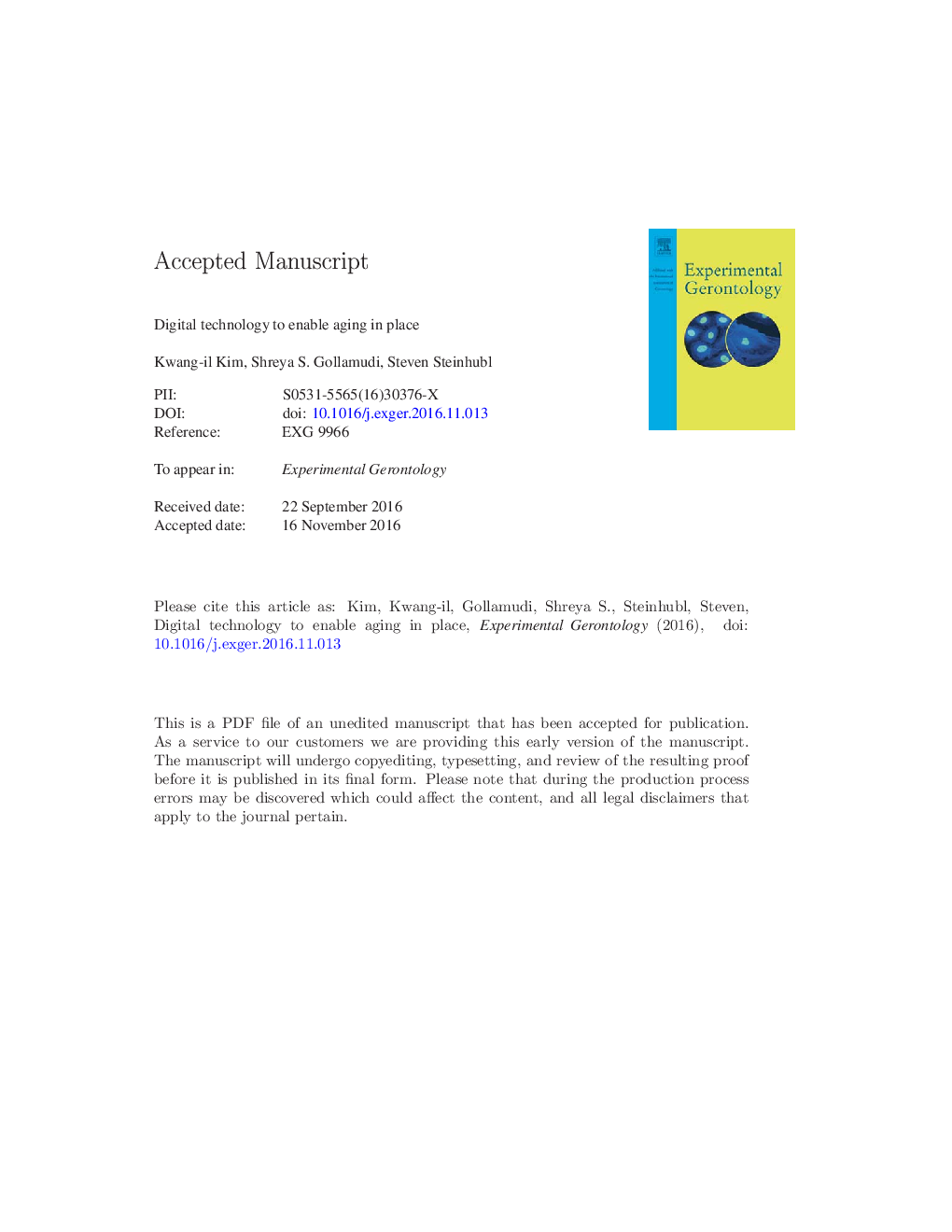| Article ID | Journal | Published Year | Pages | File Type |
|---|---|---|---|---|
| 5501469 | Experimental Gerontology | 2017 | 29 Pages |
Abstract
Aging, both of individuals and populations, presents challenges and opportunities. The multitude of morbidities and disabilities that are a too common component of aging represent significant challenges to individuals, their families and to healthcare systems. Aging in place is the ability to safely and comfortably maintain an independent and high quality of life in one's own home and community and is a highly desirable goal of most individuals with the additional benefit of significantly impacting the impending enormous healthcare burden. In order to make this possible, new care models that take advantage of novel technologies for tracking important physiologic and safety parameters need to be developed and implemented. By thoughtfully doing so, it can be possible to seamlessly provide preventative interventions when and as needed, detect the earliest signs of aggravation of chronic conditions, or identify and respond to any emergency situations, such as falls or cardiac arrest. In contrast to current approaches, caring for elderly individuals in their homes based on a digital technology infrastructure could be effective and cost-saving. In this review, we provide an overview of the characteristics of potential digital solutions applicable to creative aging along with the existing evidence supporting their ability to improve care, increase quality of life, and substantially decrease the emotional and financial costs associated with aging.
Related Topics
Life Sciences
Biochemistry, Genetics and Molecular Biology
Ageing
Authors
Kwang-il Kim, Shreya S. Gollamudi, Steven Steinhubl,
